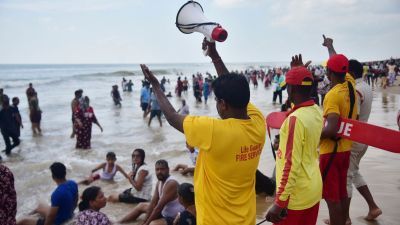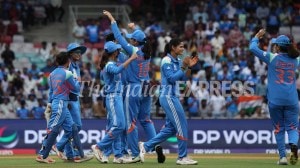In hot pursuit of the Kenyans
The gentleman's wrinkled eyes flash in defiance at the poser: just how old is he?
The gentleman’s wrinkled eyes flash in defiance at the poser: just how old is he? Japanese are known for their longevity but Hiroaki Chosa insists that the question be rephrased to ask: how young. The 80-year-old president CEO of Tokyo Marathon Foundation is perhaps an apt man to explain why his country is the best bet to take on the collective might of Kenya and Ethiopia in marathons. He’s lived the long haul,and knows a thing or two about enduring the long course.
Sunday may yet again throw up a familiar name from Kenya John Kelai,Evans Ruto or Justus Kipshirchir,or Ethiopia’s Tesfaye Tola or Berlin marathon winner Girma Assefa,and the very popular Qatar’s Mubarak Shami as Mumbai marathon winner. But the Japanese is convinced that his younger countrymen (and the more successful women) will continue to mount a challenge against the street-hegemony of the east Africans. The octogenarian yearns for a day when a Japanese will stand atop the podium.
“Kenyans are blessed with natural circumstances that help them. But in countries like Japan and even India,automobiles have meant that it’s difficult for people to even start running. Too much easy food and motors hinder marathon progress,but running goes with the old Japanese lifestyle and we are knowledgeable connoisseurs of the sport,” he says.
Further north and in considerably cooler climes is a bunch of Russians who are putting up a stiff challenge against the Rift Valley monopoly. From where they come,temperatures might be a Minus-10,30 degrees too low to feel at home in Mumbai on arrival. But Russians Oleg Kulkov and Safranov believe that their programme back home is going a long way in preparing them to take on the might of the Africans.
Siberian runner Liliya Shobukhova clocked in the 2:20 range,and won the prestigious London and Chaicago marathons last season,leading the Russian charge which now has 5 men and 3 women pushing the pace trying to match final steps with the Africans.
Elsewhere,in the United States,marathons are plotting a growth-graph of their own,independent of the national body. “There’s a resurgence there and the country provides a total environment for training,” says Dave Cundy,an international marathon board member and technical delegate. The UK too is seeing a sort of return of serious competitive structures aided in no small measure by their years of talent-spotting schemes in schools.
Target: London Olympics
For the Indians,who are primarily targeting the 2:18 Olympic qualification mark in men,matching paces with the Kenyans remains a dream fulfilled. Women here are more likely to succeed,but that hinges on India’s 5000m and 10,000m champs graduating from the track to the roads. “It’s tough to say,” race director Hugh Jones says,”who amongst the Indians can succeed though there’s serious talent in Preeja,Kavita and Sudha (all deciding to focus on the Jharkhand Nationals next month and skipping this one),but it’s an uphill task the whole world’s trying to keep pace with the Africans.”
Also,moving up the distances puts enormous pressure on athletes to match their performance from half marathon to full,though the transition’s tedious. No dearth of success precedents though with legendary Paul Tergat having made this switch before.






- 01
- 02
- 03
- 04
- 05

























